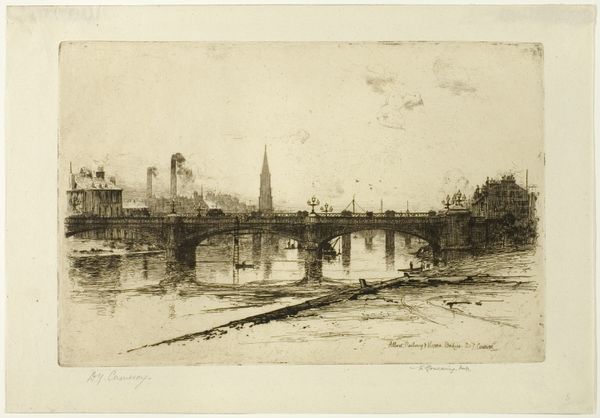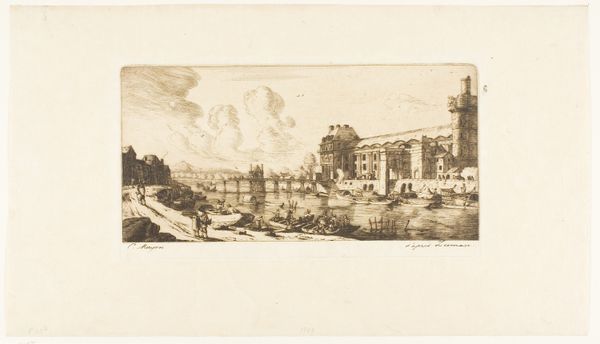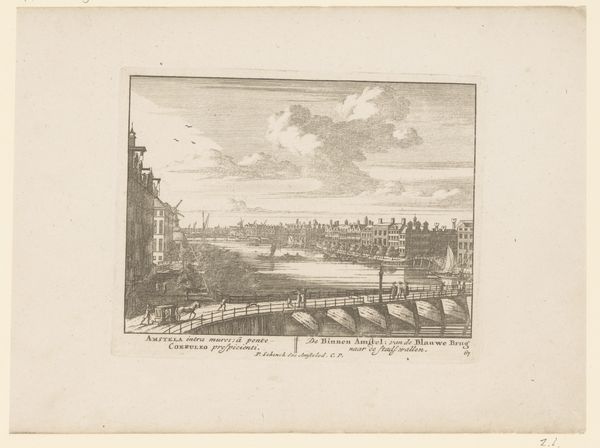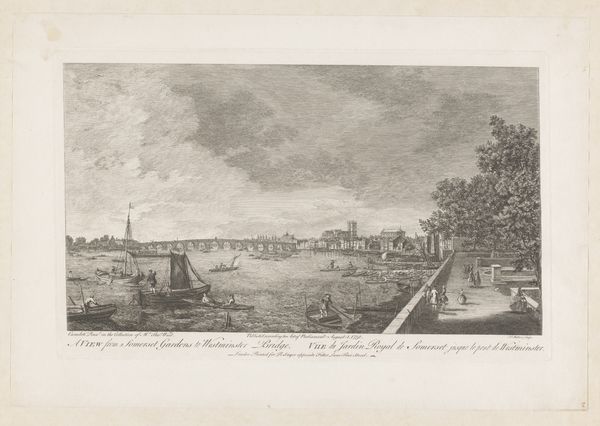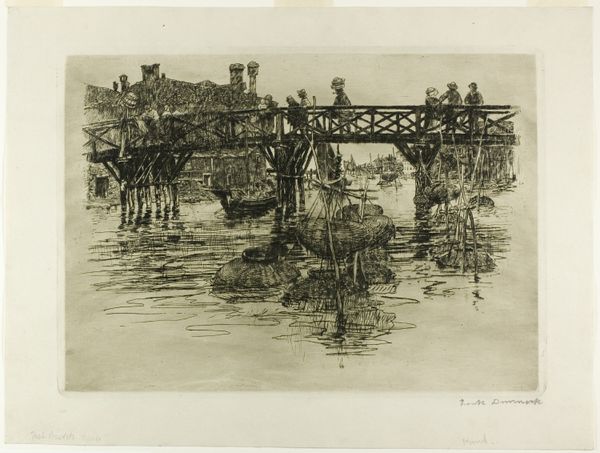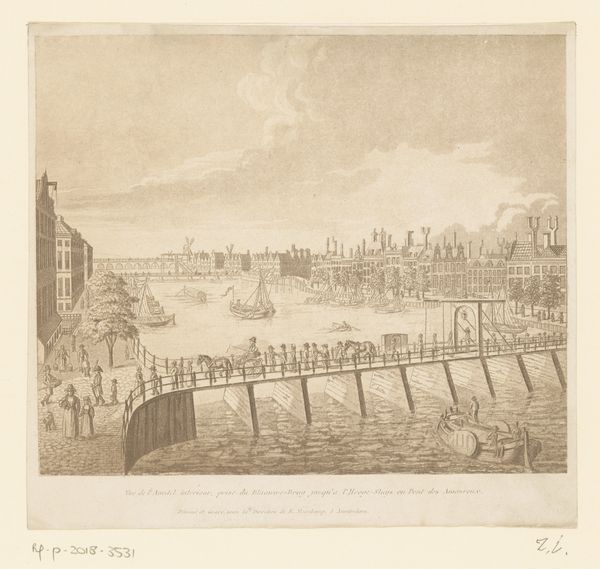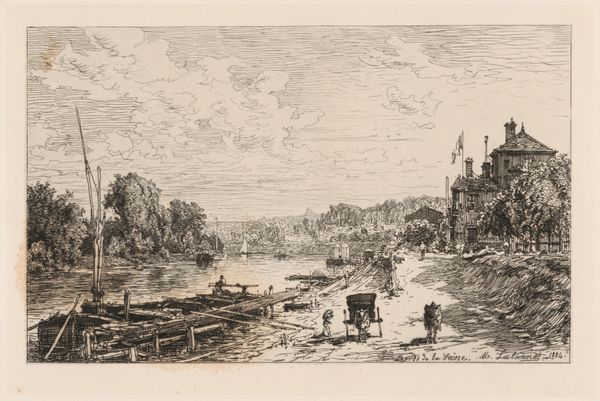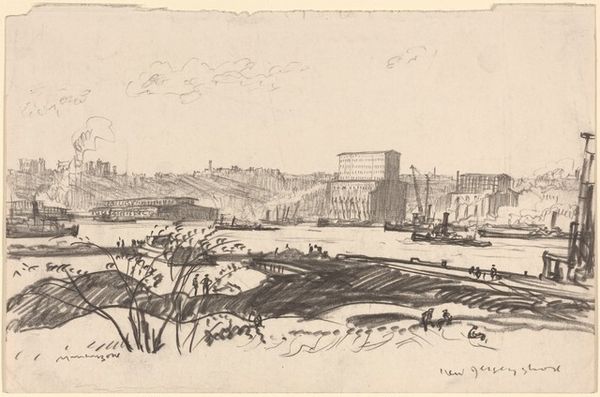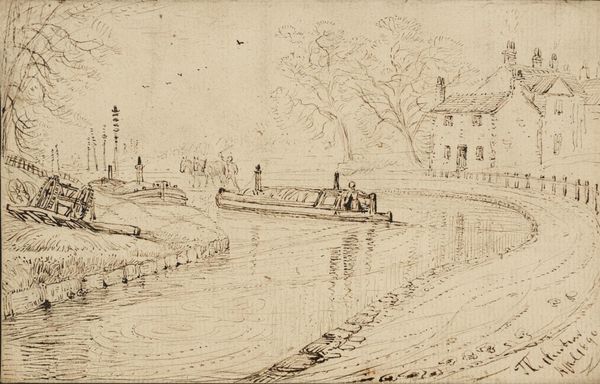
Dimensions: plate: 10.5 x 18 cm (4 1/8 x 7 1/16 in.) sheet: 23.8 x 31.7 cm (9 3/8 x 12 1/2 in.)
Copyright: National Gallery of Art: CC0 1.0
Curator: Before us hangs "Newark, N.J., from the Passaic," an etching crafted in 1879 by Mary Nimmo Moran. Editor: There’s a strange tranquility to this cityscape. Even with the industrial details, the muted tones and careful reflections lend it a calm, almost nostalgic quality. Curator: That serenity underscores a key tension in American art of the late 19th century. Moran, deeply associated with the Hudson River School, here trains its romantic sensibility on an industrial scene. Consider the Passaic River itself as a crucial commercial waterway. Editor: Absolutely, and the smoke billowing from the factory chimney certainly draws attention. The steam appears almost like an ethereal crown. A powerful statement, really. Do you think Moran consciously used this to represent industry? Curator: Undoubtedly. Though industry was rapidly reshaping the American landscape, artists faced the challenge of how to depict this transformation. Think of the ambivalence towards progress that permeates so much art from this period. Art academies embraced neoclassical idealism, a movement reacting to industrial expansion and societal change, influencing the era’s representation of modern cities. Editor: I find it fascinating how she captures both the raw, practical elements of industry alongside more timeless, almost Arcadian symbols like water and light. The reflection of the city in the river is mesmerizing, offering an ideal counterpoint to a pragmatic image. Curator: I think that contrast encapsulates a major theme in her broader work and that of the Hudson River School—an idealized version of manifest destiny where humans were meant to harmonize with nature, instead of dominating it through the use of industry and manufacturing. Editor: And in that sense, the scene transforms into a poignant symbol for that era, holding both a visual record and a visual dream for what modern American should look like. Thank you for helping illuminate these insights, such an evocative visual statement from Moran! Curator: The pleasure was all mine. Hopefully it allowed you to think of how landscape, like any genre, is fundamentally a record of cultural anxieties and negotiations.
Comments
No comments
Be the first to comment and join the conversation on the ultimate creative platform.
